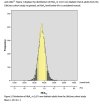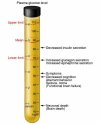Jasmin2000
Well-Known Member
- Messages
- 186
- Type of diabetes
- Type 1
- Treatment type
- Insulin
Looking up the NICE / NHS and FDA guidance on TIR we find 3.9-10 mmol/L is recommended for diabetics, with a comment that <3.9 mmol/Lis dangerous.
Does anyone know or have references for the clinical studies / peer reviewed papers from which this range was takes? I mean 3.9 is pretty specific - why not just say 4.0?
Does anyone know or have references for the clinical studies / peer reviewed papers from which this range was takes? I mean 3.9 is pretty specific - why not just say 4.0?



